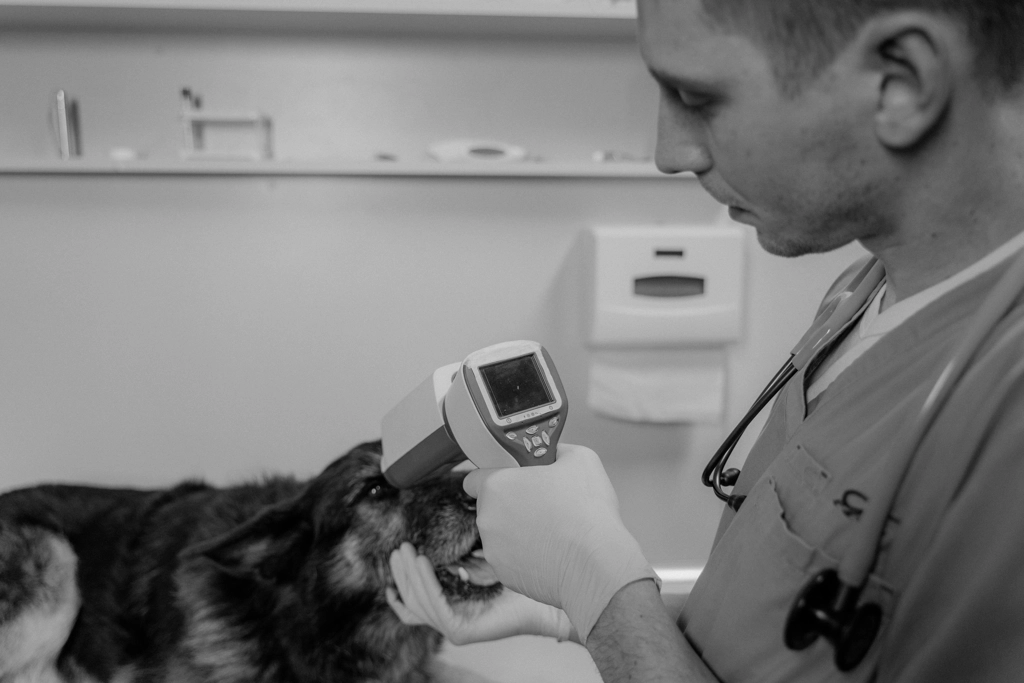20 Pawsome Ways to Avoid Costly Vet Visits for Your Dog
Introdogtion:
Vet bills can add up quickly, but the good news is that many common health issues are preventable with a little proactive care. By focusing on these 20 simple strategies, you can keep your dog healthy, happy, and out of the vet’s office. From diet and exercise to grooming and safety, here’s your ultimate guide to saving money while giving your pup the best care possible.
1. Feed a High-Quality Diet
A balanced diet is the foundation of your dog’s health. Choose food with real meat, whole grains, and vegetables, and avoid fillers like corn and soy. A nutritious diet prevents obesity, allergies, and chronic conditions.
Tips:
- Choose dog food with real meat as the first ingredient.
- Avoid fillers like corn, soy, and artificial additives.
- Look for brands approved by the Association of American Feed Control Officials (AAFCO).
- Consider your dog’s age, size, and activity level when selecting food.
Benefits:
- Prevents obesity, allergies, and digestive issues.
- Supports a shiny coat, healthy skin, and strong immune system.
- Reduces the risk of chronic conditions like diabetes and heart disease.
2. Practice Portion Control
Overfeeding is a leading cause of obesity, which can lead to diabetes, joint problems, and heart disease. Follow feeding guidelines and adjust based on your dog’s activity level.
Tips:
- Follow the feeding guidelines on the food packaging.
- Adjust portions based on your dog’s activity level and weight.
- Use a measuring cup to avoid overfeeding.
- Avoid free-feeding (leaving food out all day).
Benefits:
- Maintains a healthy weight, reducing the risk of obesity-related diseases.
- Saves money on food and potential vet bills.
3. Avoid Table Scraps
Human food can be high in fat, salt, and sugar, which are harmful to dogs. Stick to dog-safe treats and avoid feeding them from the table.
Tips:
- Stick to dog-safe treats instead of human food.
- Avoid foods toxic to dogs, like chocolate, grapes, onions, and garlic.
- Train your dog not to beg during meals.
Benefits:
- Prevents digestive upset, pancreatitis, and toxicity.
- Keeps your dog’s diet balanced and nutritious.
4. Provide Regular Exercise
Daily walks, playtime, and interactive toys keep your dog fit, mentally stimulated, and less likely to develop obesity or joint issues.
Tips:
- Aim for at least 30 minutes of activity daily (adjust based on breed and energy level).
- Mix it up with walks, fetch, agility training, or playdates.
- Use interactive toys to keep your dog engaged.
Benefits:
- Prevents obesity and joint problems.
- Reduces boredom and destructive behaviors.
- Strengthens your bond with your dog.
5. Keep Them Mentally Stimulated
Boredom can lead to destructive behaviors like chewing or digging. Use puzzle toys, training sessions, or playdates to keep your dog engaged.
Tips:
- Use puzzle toys or treat-dispensing balls.
- Teach new tricks or commands.
- Rotate toys to keep them interesting.
Benefits:
- Prevents anxiety, boredom, and destructive behaviors.
- Keeps your dog’s mind sharp and engaged.
6. Brush Their Teeth Regularly
Dental disease is preventable! Brush your dog’s teeth with a dog-specific toothbrush and toothpaste to avoid painful infections and costly cleanings.
Tips:
- Use a dog-specific toothbrush and toothpaste.
- Start slow and make it a positive experience.
- Aim for 2-3 times per week.
Benefits:
- Prevents plaque, tartar, and gum disease.
- Avoids costly dental procedures like extractions or cleanings.
7. Use Dental Chews and Toys
Dental disease is preventable! Brush your dog’s teeth with a dog-specific toothbrush and toothpaste to avoid painful infections and costly cleanings.
Tips:
- Look for products approved by the Veterinary Oral Health Council (VOHC).
- Avoid hard chews that can crack teeth.
Benefits:
- Reduces plaque and tartar buildup.
- Keeps your dog’s breath fresh.
8. Schedule Annual Checkups
Prevention is cheaper than treatment. Regular vet visits can catch potential health issues early, saving you money in the long run.
Tips:
- Book a wellness exam once a year.
- Discuss any concerns with your vet.
Benefits:
- Catches potential health issues early.
- Saves money on emergency treatments.
9. Stay Up to Date on Vaccinations
Vaccines prevent serious diseases like parvovirus, distemper, and rabies. Keep your dog’s shots current to avoid expensive treatments.
Tips:
- Keep a record of your dog’s vaccination schedule.
- Discuss core and non-core vaccines with your vet.
Benefits:
- Prevents serious diseases like parvovirus, distemper, and rabies.
- Avoids costly treatments for preventable illnesses.
10. Use Flea and Tick Prevention
Monthly preventatives are far cheaper than treating flea infestations or tick-borne diseases like Lyme disease.
Tips:
- Apply monthly preventatives year-round.
- Check your dog for ticks after outdoor activities.
Benefits:
- Prevents infestations and tick-borne diseases like Lyme disease.
- Saves money on treatments for flea allergies or infections.
11. Keep Them at a Healthy Weight
Obesity leads to diabetes, joint problems, and heart disease. Monitor your dog’s weight and adjust their diet and exercise as needed.
Tips:
- Monitor your dog’s weight regularly.
- Adjust diet and exercise as needed.
Benefits:
- Reduces the risk of diabetes, joint problems, and heart disease.
- Improves overall quality of life.
12. Pet-Proof Your Home
Remove hazards like electrical cords, toxic plants, and small objects that could be swallowed. A safe home prevents accidents and emergencies.
Tips:
- Remove hazards like electrical cords, toxic plants, and small objects.
- Use baby gates to restrict access to unsafe areas.
Benefits:
- Prevents accidents, injuries, and emergencies.
- Saves money on costly treatments for poisoning or blockages.
13. Supervise Outdoor Time
Keep an eye on your dog to prevent them from eating harmful plants, garbage, or foreign objects that could cause blockages.
Tips:
- Keep an eye on your dog in the yard or on walks.
- Avoid areas with toxic plants or garbage.
Benefits:
- Prevents ingestion of harmful substances.
- Reduces the risk of accidents or injuries.
14. Provide Safe Toys
Choose durable, non-toxic toys to prevent choking or intestinal blockages. Avoid hard objects like bones or antlers that can crack teeth.
Tips:
- Choose durable, non-toxic toys.
- Avoid hard objects like bones or antlers.
Benefits:
- Prevents choking or intestinal blockages.
- Keeps your dog entertained and safe.
15. Learn Basic First Aid
Knowing how to handle minor injuries like cuts, scrapes, or insect stings can save you a trip to the vet.
Tips:
- Take a pet first aid course.
- Know how to handle cuts, scrapes, or insect stings.
Benefits:
- Saves money on minor vet visits.
- Prepares you for emergencies.
16. Keep a Pet First Aid Kit
Stock it with essentials like bandages, antiseptic, tweezers, and your vet’s contact information for emergencies.
Tips:
- Include bandages, antiseptic, tweezers, and your vet’s contact information.
- Store it in an easily accessible location.
Benefits:
- Provides immediate care for minor injuries.
- Reduces the need for emergency vet visits.
17. Groom Regularly
Brushing your dog’s coat prevents matting and skin infections, while trimming nails avoids overgrowth and discomfort.
Tips:
- Brush your dog’s coat to prevent matting and shedding.
- Trim nails to avoid overgrowth.
Benefits:
- Prevents skin infections and discomfort.
- Keeps your dog looking and feeling great.
18. Watch for Behavioral Changes
Address anxiety, aggression, or other behavioral issues early to prevent escalation and costly training or medical interventions.
Tips:
- Address anxiety, aggression, or other issues early.
- Consult a trainer or behaviorist if needed.
Benefits:
- Prevents escalation and costly interventions.
- Improves your dog’s quality of life.
19. Prevent Heatstroke
In hot weather, provide shade, water, and avoid walking on hot pavement. Heatstroke is a serious (and expensive) emergency.
Tips:
- Provide shade and water in hot weather.
- Avoid walking on hot pavement.
Benefits:
- Prevents a life-threatening emergency.
- Saves money on emergency vet visits.
20. Invest in Pet Insurance
While it’s an upfront cost, pet insurance can save you thousands in unexpected vet bills. Compare plans to find one that fits your budget.
Tips:
- Compare plans to find one that fits your budget.
- Look for coverage that includes accidents, illnesses, and preventative care.
Benefits:
- Reduces the financial burden of unexpected vet bills.
- Provides peace of mind.
Bonus Tips for Extra Savings
- DIY Grooming: Learn to trim nails, clean ears, and brush teeth at home.
- Buy in Bulk: Stock up on food, treats, and preventatives to save money.
- Use Preventative Care Plans: Many vets offer subscription-based plans for routine care.
- Educate Yourself: Learn about common health issues and how to prevent them.
Conclusion
Keeping your dog healthy doesn’t have to break the bank. By following these 20 simple tips, you can prevent many common health issues, avoid costly vet visits, and ensure your dog lives a long, happy, and healthy life. Remember, a little proactive care goes a long way—both for your pup and your wallet!


Leave a Reply
You must be logged in to post a comment.